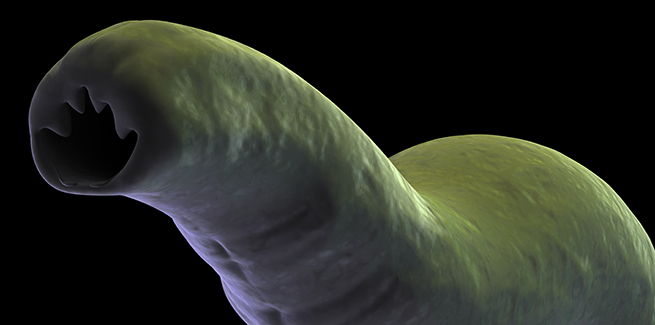New diagnostic test could replace fecals (or at least reduce how much sample you need to collect)

“Parasites have changed dramatically over the last decade,” said Christian Leutenegger, DVM, PhD, FVH: They’re increasing in number, they’re migrating, and they’re mutating in ways that make them difficult to treat in companion animals.
Mostly through anti-microbial resistance, one of the most serious global problems facing both human and animal healthcare.
“At the same time drug resistance is increasing, so is the incidence of human exposure to these parasites,” Leutenegger added. “Many of these new resistant parasites have zoonotic potential—they can infect the pet owner, the veterinarian, and the veterinary staff.”
“Current diagnostic tests haven’t kept pace,” he told NEWStat.
Director of molecular diagnostics at Antech Diagnostics and Imaging, Leutenegger spent the last three years developing their new KeyScreen GI Parasite PCR test, which uses molecular diagnostics to read the genetic material of a parasite or virus—"similar to what’s done in COVID testing.”
Leutenegger said Antech’s new test can detect as many as 20 different parasites from a single 0.15 gram stool sample: “And it can [also] detect the presence of drug-resistant parasites like hookworm.”
Overuse of antimicrobials to treat hookworm has created high levels of anthelmintic resistance and multiple drug resistance (MDR). Leutenegger said KeyScreen automatically checks for the genetic resistance marker when it detects hookworm, delivering vital information to inform effective treatment.
Cryptosporidium is another classic example of a parasite which cannot be detected with conventional tests.
The new test represents another first in the veterinary arena: “We can now differentiate the zoonotic strains [of parasites] which are dangerous for people—like Giardia— from the nonzoonotic strains,” said Leutenegger, adding that it marks an important step in the One Health initiative. “We need to be able to identify those zoonotic strains in order to protect people.”
KeyScreen detects parasites which can’t be detected with conventional diagnostic tests—like Cryptosporidium— because they aren’t present in sufficient numbers in the stool sample, or they’re unstable and disintegrate. Another advantage: KeyScreen requires a smaller sample size than traditional tests: “You need a relatively small sample of stool, 0.15 of a gram—significantly less than what other tests require, which is 2 grams.”
Sample stability is another big advantage of PCR testing: “Our samples are stable for 10 days, refrigerated. For conventional tests, that stability only lasts for about three days.”
The test will be available late Spring 2022, and Antech’s new molecular technology is supported by 10 testing locations across North America with next-day test results.
Leutenegger said conventional tests still have their place in the diagnostic workup: “We’re focusing on improving the diagnostic test result to the veterinarian so they have a new option.”
He called commercially available PCR testing a huge step forward in the area of anti-microbial stewardship: “We need to make sure that veterinarians have the right diagnostic tools so that they can make more efficient treatment decisions,” Leutenegger said. “They can recognize whether those parasites have become drug-resistant and can modify the treatment plan to get rid of these parasites in the first attempt, so we eliminate unnecessary suffering in the pet, and unnecessary exposure to people.”
Photo credit: © SciePro/iStock/Getty Images Plus via Getty Images



